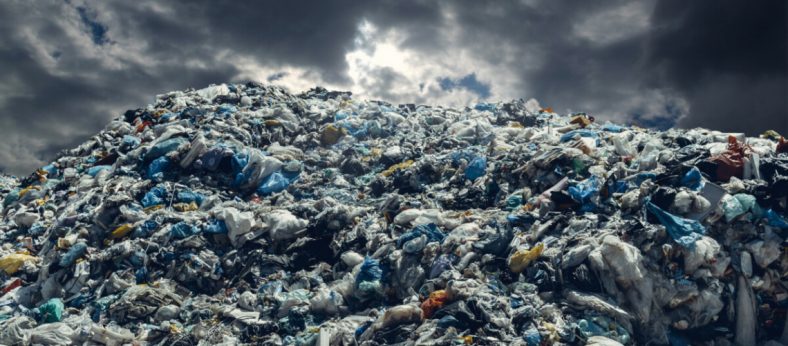We are used to take plastic for granted as part of our lives. Plastic is everywhere. More than 300 million tonnes of plastic is produced each year, and according to a UN report, more than 9 billion tonnes of plastic is produced worldwide [1]. By the early 20th century, plastics were used in electric lighting, telephones, wireless telegrams, photography, and sound recordings. In fact, when we look at media devices commonly used over the last century, we find that plastics were crucial to a number of popular media technologies. In 1948, Columbia records introduced a vinyl record. Lightweight polycarbonate plastic is also used in c-cassettes, MiniC´Discs, DVD and Blu-Ray.
Plastic is present in the food packaging, clothing, electronics and pharmaceutical industries, as coatings, in the photographic and film industries, in consumer goods, in childcare – almost everything around us. The electronics industry in Europe uses an estimated 6% of plastics [11] and15-25% of the microelectronics in use (eg smartphones, data computers, tablets) is plastic. Plastic is an ideal insulator because it has poor electrical and thermal conductivity, good formability and is lightweight.
Plastics can be divided into thermoplastics, which do not change when heated and can be reshaped, and disposable plastics, which are used in circuit boards, for example, due to their plasticity and good heat resistance. It usually ends up in a landfill.
In addition, there are bio-based plastics, which refer to plastics processed from renewable raw materials of biological origin. Biodegradable plastics are materials that degrade through a biological process into carbon dioxide and water. Contrary to popular belief, bio-basedness is not a prerequisite for biodegradability or vice versa. [2]

A 1956 world oil production distribution, showing historical data and future production, proposed by M. King Hubbert – it had a peak of 12.5 billion barrels per year in about the year 2000. As of 2016, the world’s oil production was 29.4 billion barrels per year
From deep time to the 6th massextinctions
Over more than two hundred years, technocultural systems have transformed significant shares of the Earth’s fossil fuels into heat and plastic. The formation of fossil fuels takes thousands of years, the culture of the plastics industry – extraction, transport, trade, fractionation and conversion into monomers and then polymers and then products that are sold, used and disposed of – takes place within a few months (Marriott and Minio-Paluello 2014) [12]
The overall impact of human societies on earth has led to the anthropocene, a new geological era.
A huge number of living systems are not keeping pace with the ecological changes caused by anthropogenic industrial activities. While some species thrive in these changed conditions, there is an ongoing sixth wave of mass extinction that will be of immense importance to our planet and habitats. This is despite the fact that more than 99 percent of the species that have occurred on Earth have already become extinct (McKinney 1997: 110).
An estimated 5.25 trillion plastic particles floating in the oceans with an estimated total weight of 270,000 kilos. Plastic debris accumulates into large spins that only collect more debris with them.
By 2050, it is estimated that there will be more plastic in the seas than fish.
-Plastics are known to release chemicals that are harmful to the environment, but according to a new study, they also release the greenhouse gases methylene and ethane into the atmosphere. Polyethylene, which is also the most common type of plastic, proved to be the worst producer of greenhouse gas emissions. Polyethylene is used in plastic bags, among other things, and accounts for more than a third of all plastic produced in the world. [3]
Certain forms of bacteria have evolved to inhabit the plastic vortices of the oceans and use it for food. Bacteria are responsible for the most significant changes in the biosphere, the atmospheric oxidation event that occurred 2.3 billion years ago. Microbes also live in the digestive tract of all vertebrates and are responsible for digestion. This raises the question of what we should protect. Aesthetic differences are crucial here; is an easier to feel compassion for a penguin than a micro-organism that requires an electron microscope to examine.
E-waste management, recycling, environmental pollution and health risks
Since 2015, the global rapidly growing amount of e-waste has exceeded 42 million tons. This poses an ecological, health, ethical and colonialist problem. The global north supplies enormous amounts of waste for recycling and storage in the global south. In the words of geographer David Harvey, “the capitalist economy does not solve its problems, it only moves them from one state to another” **. [4]
Electronic waste mountains are a serious environmental and health risk. Equipment often contains mercury, lead and other heavy metals, various fluorescent and flame retardants, and plastics that, if improperly handled, can contaminate soil, air, and water. [4] The primary problem of incineration arises from the presence of halogenated flame retardants which release toxic gases. Metals are separated from circuit boards by heating and dissolving in acid. When soaking, wastewater enters rivers as well as soil. In addition, the chemicals used in e-waste treatment are very dangerous to health, and respiratory diseases, for example, are common among scrap collectors in developing countries. Many of them are minor children. E-waste toxins can also cause a variety of birth defects, nerve damage, cancer, and many other health hazards [4]
In the words of geographer David Harvey, “the capitalist economy does not solve its problems, it only moves them from one state to another” **. [5]

Photo: IMPEL-EU European Union Network for the Implementation and Enforcement of Environmental Law
Chemicals that disrupt the endocrine system
Many chemicals are used in the processing of plastics and plastic compounds, which have been found to interfere with the human endocrine system, which is the body’s hormonal function responsible for regulating metabolism, growth, development, reproduction and mood. More common endocrine diseases include diabetes, bone loss, obesity, and various thyroid diseases. [6] How important are the chemicals in plastic compounds in the pathogenesis of these living standards diseases.
The greatest concern about the presence of BPA and phthalates has been raised in food and beverage packaging where chemicals can where chemicals can dissolve and be ingested. In particular, the use of BPA-based polycarbonate in baby bottles has been a concern and in many countries their sale is prohibited by law. BPA and phthalates can be found on computers, CDs and DVDs, and, surprisingly, also on thermal papers, commercial receipts, and ATM printouts. It has been found that BPA is absorbed more efficiently if the skin is wet or oily, whether it has been in contact with e.g. moisturizer or sweaty.
Life after plastic
Modern industrial societies are based on the idea of continuous economic growth. Full employment and welfare services are dependent on economic growth, as are debt and growth-based financing and investment systems. A halt in economic growth would mean the dismantling of services and support systems, debt restructuring, bank failures, high unemployment and the downsizing of the entire welfare state. [7]. Growth and development are largely based on the oil industry, the production of plastics and thus the media at the heart of cultures. Communication, transport, stock exchanges and logistics are built on digital media.
In discussions about the collapse of industrial society, the most topical issue is most often the peak of world oil production defined by M. King Hubbert, followed by the inevitable decline in total production. As oil is the world’s main source of energy and its importance is further emphasized in key areas of society’s infrastructure, the oil peak is considered to be an insurmountable problem and the cause of the collapse. What makes the issue topical is the fact that many people assume that the oil peak was passed between 2005 and 2011, when the world economy would have already reached its peak and would soon go into recession. For example, the financial crisis of 2007-2009 is considered to be the result of an oil peak. [8]
Heinberg does not believe that the oil peak can be solved by technical solutions, as the world economy and technological development are far behind the current problem, oil is also crucial for the production of other forms of energy, and a viable form of energy would only delay rather than prevent a collapse. In his book Powerdown; Options and Actions for a Post-Carbon World, he puts forward as a primary solution a cultural change of direction in which the world abandons the pursuit of growth and high consumption. [8]
Jonathan Huebner, for his part, defined the innovation peak of technological development by comparing the list of major inventions from the Middle Ages to the present with the world’s current population. He found that the peak of innovation was reached as early as 1873 and that the average innovativeness of the world’s population declined throughout the 20th century, despite the fact that the population was more educated and more funds were devoted to research. Based on the innovation curve he has formed, he estimates that in 2005, 85% of all innovations had already been made. According to him, technological development is limited not only by what is physically possible to invent, but also by what is economically possible or sensible to invent. [9]
The collapse of industrial society is seen as a dramatic chain of events that would result in famine, epidemics, the collapse of democratic systems, population displacement, the collapse of safety nets and chaos. As a significant difference from historical collapses, the collapse of industrial societies is seen for the first time in world history as a purely global phenomenon. On the other hand, if humanity is able to renew its culture and values, according to Thom Hartmann, it is possible to build a new society after the collapse that is not based on private property, growth, subjugation and destruction and could therefore be more permanent in structure. [10]
Alternatives are being sought for oil and substitutes are being developed for plastics, such as sunflower oil, seaweed, cellulose and milk. The production of biodiesel, which takes land away from food production, has already been criticized. What about when you want to make more bio-based plastics on the market. It therefore makes sense to focus on the development and production of bio-based plastics in raw material sources that do not compete with food production, [11]
Of the substitutes being developed as a sustainable solution, there are hardly any. They do not solve the problems of continued growth and over-consumption or acquisition. The only solution on a sustainable basis is to seek out the structure of society, worlds of values and material-centredness from society and to look for alternative models of action.

Painting
REFERENCES:
-TECHNOFOSSILS of the ANTHROPOCENE
Media, Geology, and Plastics / Sy Taffel
* ´Plastopocene´ -term copied from: https://ekokumppanit.fi/muoviopas/
[1] /https://www.maailma.net/uutiset/tuore-tutkimus-muovi-luultua-vaarallisempaa-paastaa-ilmakehaan-kasvihuonekaasuja
[2] s/https://www.pakkaus.com/biopohjainen-ja-biohajoava-muovi-eivat-tarkoita-samaa/
[3] /https://www.maailma.net/uutiset/tuore-tutkimus-muovi-luultua-vaarallisempaa-paastaa-ilmakehaan-kasvihuonekaasuja
[4] /https://eetti.fi/vastuullinentekniikka/
/https://www.maailma.net/nakokulmat/muovigaten-jalkipyykki-mita-muovin-dumppaaminen-kehitysmaihin-kertoo-taloudellisesta; **citation from David Harvey´s lecture ’The Enigma of Capital”, which was arranged in London School of Economics 26.4.2010
[5] /https://www.maailma.net/nakokulmat/muovigaten-jalkipyykki-mita-muovin-dumppaaminen-kehitysmaihin-kertoo-taloudellisesta; **citation from David Harvey´s lecture ’The Enigma of Capital”, which was arranged in London School of Economics 26.4.2010
[6] https://www.vaasankeskussairaala.fi/potilaille/hoito-ja-tutkimukset/erikoisalat/storningar-i-hormonbalansen-och-amnesomsattningen—endokrinologi/
[7] “Hyvinvointivaltio vaarassa”, Helsingin Sanomat 30.9.2010, s. A5
[8] Grupp, Adam: Peak Oil Primer energybulletin.net. Energy Bulletin
[9] Huebner, Jonathan: A possible declining trend for worldwide innovation
[10] Hartmann, Thom: The Last Hours of Ancient Sunlight. New York, NY: Three Rivers Press, 1997
[11] /https://ekokumppanit.fi/muoviopas/
[12] TECHNOFOSSILS of the ANTHROPOCENE
Media, Geology, and Plastics
Sy Taffel















 (Figure 1: Denis d’Or – the first electrophone)
(Figure 1: Denis d’Or – the first electrophone) (Figure 2: One of Reed Ghazala’s circuit-bent instruments)
(Figure 2: One of Reed Ghazala’s circuit-bent instruments)









